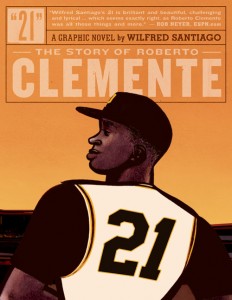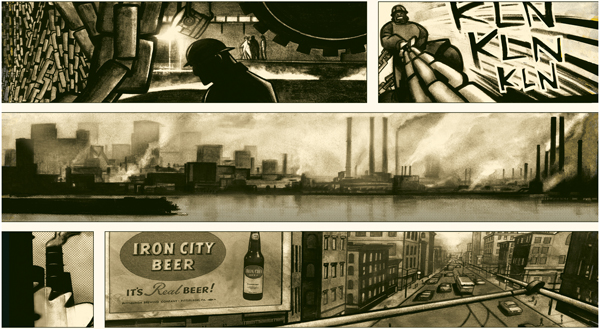Kirkus Reviews, founded in 1933, is a venerable institution in the media world. For more than 75 years, Kirkus has served as the industry bible for bookstore buyers, librarians, and ordinary readers alike. Now Popdose is proud to announce our partnership with this titan of American publishing.
We’ve joined the Kirkus Book Bloggers Network. Every week, a rotating crew of your favorite Popdose writers will grace the virtual pages of Kirkus Reviews Online, taking on the best — and sometimes the worst — in pop-culture and celebrity books. From coffee-table studies to quickie unauthorized bios, if it’s about show biz, it’s fair game.
This week we look at a unique biographical treatment of one of the titans of American sports …

What becomes a legend most? Make no mistake, Roberto Clemente was a legend. Many baseball players are admired, but few are as beloved as Clemente. Besides being a dominant athlete for nearly two decades, he was devoted to social justice and humanitarian causes, and stood as an inspirational figure for both the black and Latino communities. Now author and illustrator Wilfred Santiago has elected to tell the story of ”the Great One” as a full-length graphic novel, 21: The Story of Roberto Clemente, out now from Fantagraphics Books.
It’s a smart move. The comics medium seems uniquely suited to depicting America’s pastime. Baseball is a game of frozen moments, flickering instants that can turn a game either way; the bat swinging a hair too late to catch a sinker, the outstretched hand that touches the bag just before the infielder’s foot. James Sturm’s seminal graphic novel The Golem’s Mighty Swing demonstrated how the comics panel can capture those moments. But Santiago is using a far larger toolset than Sturm. He is capable of great delicacy of atmosphere, as evidenced by the two-page spread below, using a combination of ink washes and photo-montage to capture Clemente’s initial impressions of Pittsburgh, where he would spend his career with the Pirates:

Santiago balances the realism and research with expressionistic techniques developed in his earlier fiction works. He’s a cartoonist first, populating his meticulously-rendered scenery with deft, sparse caricatures. The figure drawing, especially in the baseball scenes, is loose and exuberant, conveying an athlete’s joy in motion. When Clemente leaps for a fly ball, his feet scissor over his head; when he throws with his trademark accuracy, his fingertips literally sprout eyeballs. Collaged magazine advertisements take voice and speak; the disembodied head of Bob Hope exhorts Clemente to learn English. When the Pirates lose, we see the fans in the stands, their broken hearts leaping out of their chests.
Read the rest of this article at Kirkus Reviews!




Comments